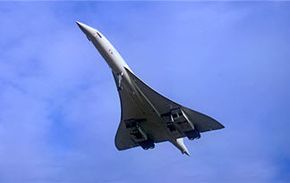In 2003, the Concorde, the jet that took the wealthiest of air travelers from New York to London in a mere three hours, flew its last voyage after nearly three decades of commercial flights. The supersonic jet, which flew at Mach 2 (double the speed of sound) was never very profitable, and after the deadly crash of Air France Flight 4590 in 2000, enthusiasm for the aircraft waned.
But several aircraft manufacturers are betting that enough customers miss crossing the Atlantic in half the time it takes today to make supersonic flight practical and profitable, and have a variety of new designs in the works to bring Mach speeds back to commercial flight.
Advertisement
